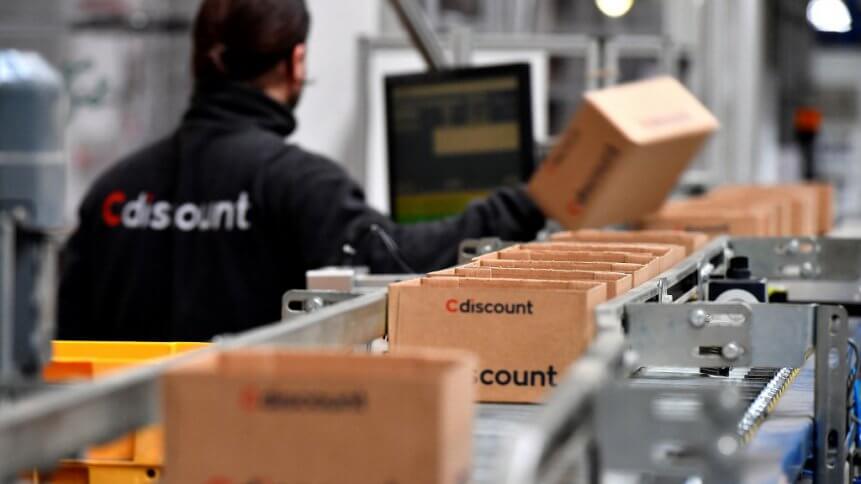3 macro trends redrawing digitized supply chains in 2021

- Managing the organization’s crisis response with digital solutions might not just improve supply chains today, but would create future value that cannot be dismissed
The events of 2020 disrupted supply chains worldwide. While we’d seen interruptions as a result of unexpected events, like natural disasters and international trade, no disruption in recent history had been on the scale of that caused by the effects of the coronavirus.
In a Harvard Business Review Analytics Services survey – 95% of nearly 200 business leaders across a range of industries including manufacturing, financial services, and technology said their companies have experienced disruption to strategic sourcing and supplier management processes during the pandemic.
While cataclysmic, the impact of the pandemic on supply chains was somewhat tempered by the wider adoption of digital tools and capabilities. Where many industries were already looking towards digitalization to enhance operational and cost efficiencies before the emergence of the global health crisis, the pandemic accelerated the deployment of cloud, robotic process automation, artificial intelligence, and blockchain, just a handful of the technologies adding digital enhancements to global supply chains.
With this in mind, let’s look at three crucial tech-driven trends that have kept, and will keep, moving supply chain management along in 2021, according to Forbes.
E-commerce comes into its own
Online commerce and an omnichannel retail strategy were already growing at twice the rate of brick-and-mortar retail even before the pandemic – but picked up dramatically as the world became acclimatized with a new social distancing imperative, and purchasing online became the norm rather than the exception when one can’t find the item available elsewhere.
In supply chain terms, e-commerce has also greatly accelerated the adoption of automated equipment for packing and filling orders, similarly for lessening the amount of contact and to meet the reduced number of employees possible allowed on the warehouse floor.
But once installed and allocated for, over time these automated solutions (including robotics and autonomous drones) will help reduce costs and make logistics and last-mile deliveries more efficient.
Rounding out the improvement of supply chains with digital solutions will in fact be impacted on the last mile: the current generation of delivery drones and autonomous robots are not to the level of clockwork efficiency yet, but certain retailers are experimenting with turning brick-and-mortar outlets that are seeing lesser sales into new delivery and storage hubs, so goods can be dispensed from there at a lower cost and reach the customer quicker.
Tailor-made personalization
Companies are beginning to explore on-demand manufacturing rather than traditional manufacturing models, meaning they can keep less physical inventory on-hand.
Using a digital representation of parts allows manufacturers to make small changes to digital files quickly at no additional charge, which provides more agility in the manufacturing process.
3D printing and additive manufacturing, in general, has made it far easier for manufacturers to offer far more variants of the same products, extending the personalization aspect.
But the increase in personalized SKUs means a greater amount of inventory needs to be stored, adding greater complexity in existing supply chains. But a digital stock management system could help support this and remove it as a barrier.
A segmented product strategy is likely the best way to tackle this, with companies having different tiers of product service for different levels of customer. For instance, customers who order more frequently, have standing orders, and pay in advance for future shipments might be considered a more privileged tier of clientele, with the order tracking system sorting them by order of priority at any given time.
Automation and Robotics
YOU MIGHT LIKE

How quantum computing could transform the supply chain
Deloitte released its own procurement short survey last year, reporting that “with the pandemic and associated economic slowdown, nearly all industries are viewing cost and cash management as essential. In addition, organizations are addressing and managing extreme risk and supply continuity issues. While many companies weren’t adequately prepared for widespread disruption of this scale, some may not feel the full effects of the crisis upon their business yet.”
For those companies that are already feeling the pinch in their supply chains, a digital solution such as robotic process automation (RPA) which automates a lot of the repetitive, mundane, and high volume tasks is probably already being used to some degree.
Over the next year or two, we should see certain RPA systems being disrupted and becoming more commonplace, ideally lowering in cost as well and becoming more accessible to smaller enterprises, including those with an existing legacy system that can be replaced with an external RPA solution to automate the work inside the legacy system.









